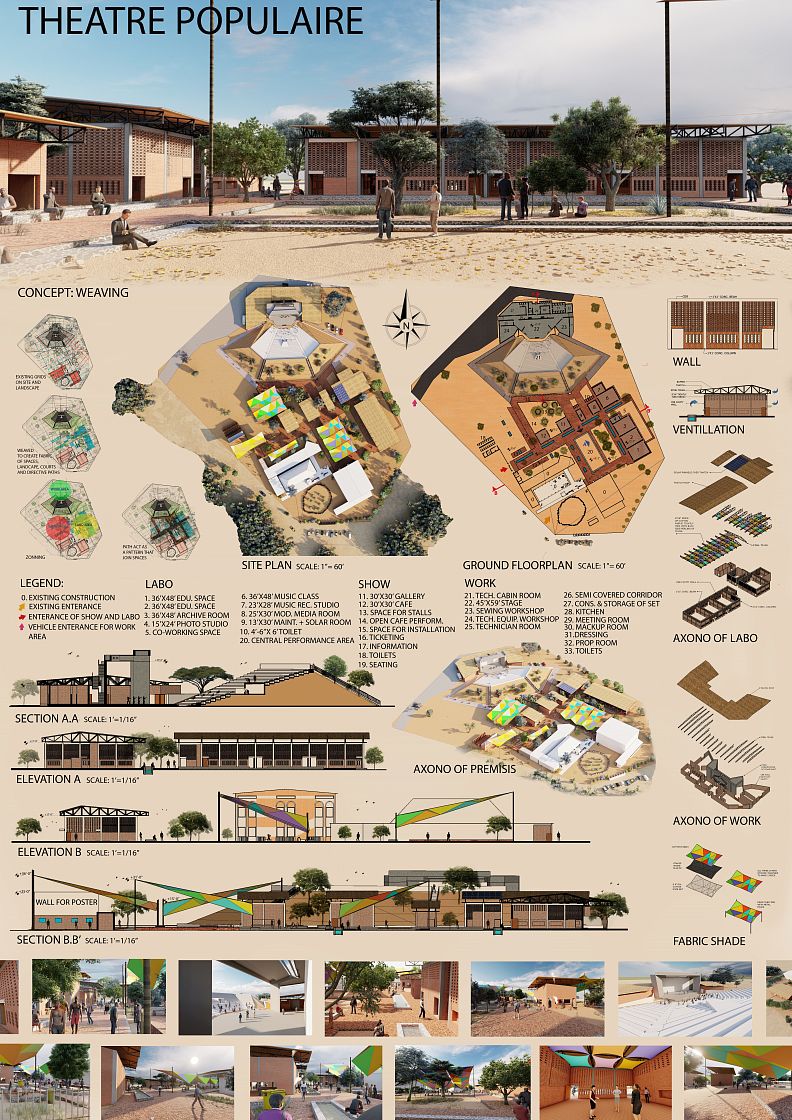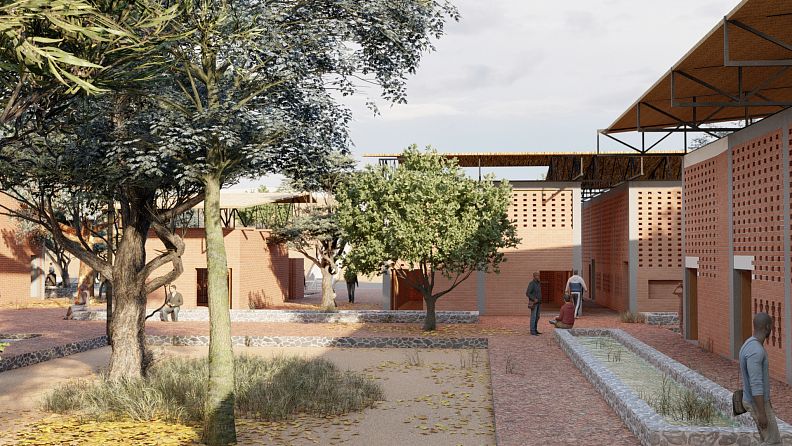Rehabilitation of Theatre Populaire

Project idea
Cotton is main crop cultivated in Burkina Faso. Making threads from cotton and weaved to make fabric are cultural practices of Burkinabe’s. Weaving is took as a concept that different arts, crafts, talents and practices considered as a thread and weaved together to make a fabric of cultural unity. Main focus is on making site pleasant and active during hot climate, based on natural resources, less dependent on electricity. Community involvement, local material, local techniques and waste utilization is incorporated in construction process to make it sustainable, to feel ownership, community up gradation and to produce interest.
Project description
In designing phase, existing structures and all trees are saved, only back side of the stage is demolished. Existing grids on site and landscape weaved together to create fabric of spaces, landscape, courts and directive paths. Path act as a pattern that joins whole complex. Zones are divided as show area at the entrance, work area on back stage, labo at east side, one who come out of classroom have clear visual and directional path to theatre and show area. All zones are connected with each other through walking paths. Three entrances are provided, first one existing, second one “show and labo”, third one is vehicle entrance for the work area allowing artists, and trucks loaded with equipment’s. Second one entrance contains sign board wall and ticketing for upcoming shows. A main path at the second entrance with temporary stalls on both sides, at the center of path series of water bodies (also rain water collectors), sides of water bodies used as cooled sitting space, path leads to theatre, café, gallery and existing blocks, main path ends at labo. To make outer spaces shaded and cool, micro climate is created with water bodies, tree shade and some fabric shade. Which also allow cooler air in interior spaces. Spaces also active during rain, no water will stay on paths.
Technical information
Only ground floor is utilized, so that no heavy construction is required, accept for stage. All walls are made of compressed earth block size 5.5”x 8.8”x 4.3” with 10% cement ratio. All walls are 1’ thick to block heat from direct sun, and have patterned cavity above human to allow flow of light and air. Walls have 17’ height making internal space bigger and cooler when crowded. Walls have series of CEB Louvers instead of windows below human head to allow to enter maximum light and air passing through water bodies. Because of wall height and span, 1’x 1’ columns and beams are used to provide maximum life span. Cement is easily available in Ouagadougou. Roof is made of steel trusses, Upper part of truss is thatch roof, at lower part of truss 6’x 6’ pieces of cotton fabric is tied, creating buffered roof. Interior floor is made of 8”x 8”x 3” Compressed earth tile with 15% cement ratio. Exterior paths are 1’ high, made of compressed earth, top is covered with press flattened 2’ to 3” dia pebbles, granite as a curb for paths. Water bodies are made of concrete with granite stacking. All material are locally sourced. All openings of interior are covered with mosquito net accept doors. Outer fabric shades made of three layers, bottom 0.5” dia rope net, center stacked plastic waste, top cotton fabric, then all layers stich together.
Co-authors
Wajiha Siddiqui



























